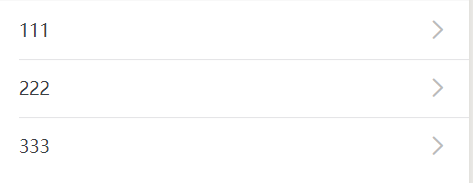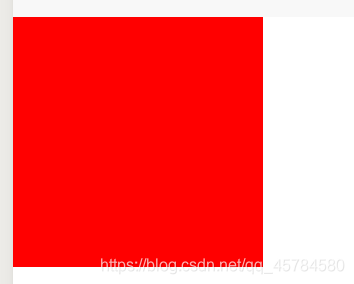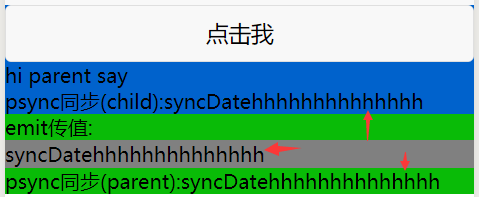组件定义使用
在项目的/component目录下存放组件,在要显示组件的页面中则分为3步:导入、注册和使用。
<template>
<view class="phone">
// <uni-coms />
<uni-coms ></uni-coms> //第三步:使用组件(这里单标签双标签都可以)
</view>
</template>
<script>
import uniComs from "@/components/uni-coms/uni-coms.vue" //第一步:导入组件
export default {
components: {
uniComs //第二部:注册组件
}
}
</script>
注意:
uni-app只支持vue单文件组件(.vue 组件)。其他的诸如:动态组件,自定义 render,和<script type="text/x-template"> 字符串模版等,在非H5端不支持。
easycom 的使用
传统vue组件,需要安装、引用、注册,三个步骤后才能使用组件。easycom将其精简为一步。 只要组件安装在项目的components目录下,并符合components/组件名称/组件名称.vue目录结构。就可以不用引用、注册,直接在页面中使用。(HBuilderX 2.5.5起支持easycom组件模式)
1、在uni-app插件市场下载符合components/组件名称/组件名称.vue目录结构的组件,自己写的也可以哦 ( 我下载的这个)
2、在page.json中自定义easycom配置:
"easycom": {
"autoscan": true,
"custom": {
"uni-(.*)": "@/components/uni-$1/uni-$1.vue" //路径(正则表达式)
}
}
3、在页面中直接写
<template>
<view class="container">
<uni-list>
<uni-list-item title="第一行"></uni-list-item>
<uni-list-item title="第二行"></uni-list-item>
</uni-list>
</view>
</template>
<script>
// 这里不用import引入,也不需要在components内注册uni-list组件。template里就可以直接用
export default {
data() {
return {
}
}
}
</script>
结果:

uni-app内置基础组件
uni内置了小程序的所有组件,需要以 vue 的事件绑定语法来绑定,如 bindchange="eventName" 事件,需要写成 @change="eventName" 哦
<picker mode="date" :value="date" start="2015-09-01" end="2017-09-01" @change="bindDateChange">
<view class="picker">
当前选择: {{date}}
</view>
</picker>
全局组件
需在 main.js 里进行全局注册,注册后就可在所有页面里使用该组件。
import Vue from 'vue'
import App from './App'
import uniList from './components/uni-list/uni-list.vue'
import uniListItem from './components/uni-list-item/uni-list-item.vue'
Vue.component('uni-list',uniList)
Vue.component('uni-list-item',uniListItem)
index.vue (所有页面)里可直接使用组件
<template>
<view>
<uni-list>
<uni-list-item title="111"></uni-list-item>
<uni-list-item title="222"></uni-list-item>
<uni-list-item title="333"></uni-list-item>
</uni-list>
</view>
</template>
结果:

注意:
Vue.component的第一个参数必须是静态的字符串。nvue页面暂不支持全局组件- 在
uni-app中的关键字,不可作为组件名 (详见)。
父子组件传值
1、父组件向子组件传递数据( props )
子组件:
<template>
<view>
//在子类标签写上引用
<view class="content" :style="[{background:pageList}]"></view>
</view>
</template>
<script>
export default {
//在子类props里定义接收参数
props:{
pageList:{ //参数名
type:String, //参数类型
default:'#999' //参数默认
}
},
}
</script>
<style lang="scss">
.content{
width: 400upx;
height: 400upx;
}
</style>
父组件:
<template>
<view class="phone">
//然后在父类写上准备传递的参数
<uni-coms :pageList="noticesList"></uni-coms>
</view>
</template>
<script>
import uniComs from '../../components/uni-coms/uni-coms.vue'
export default {
components:{
uniComs
},
data(){
return{
noticesList: "#f00"
}
}
}
</script>
这样子组件拿到父组件的背景颜色,就会去覆盖默认的背景颜色,就变成了红色

2、子组件向父组件传递数据( emit )
子组件:
<template>
<view>
//在子类写上触发事件
<view class="content" :style="[{background:pageList}]"></view>
<button type="primary" @click="passValue">点击传值</button>
</view>
</template>
<script>
export default {
//需要首先在子类组件定义事件
methods:{
passValue(){ //方法名 //值
this.$emit("returnDate","111")
}
}
}
</script>
//然后点击子类触发,就可以传值给父类
父组件:
<template>
<view class="phone">
//在父类引用标签上写上在子类$emit里面定义的方法名,以及接收方法
<uni-coms @returnDate=returnDate :pageList="returnDate"></uni-coms>
</view>
</template>
<script>
import uniComs from '../../components/uni-coms/uni-coms.vue'
export default {
components:{
uniComs
},
methods:{ //接收方法
returnDate(val){
console.log("接收的值:"+val)
}
}
}
</script>
点击传值:

3、子组件与父组件数据同步( .sync )
子组件:
<template>
<view class="container" style="background: #0062CC;">
<button @tap="childClick" >点击我 </button>
<view class="child"> hi {{showModal}}</view>
<view>psync同步(child):{{syncDate}}</view>
</view>
</template>
<script>
export default {
props: {
showModal: {
type: String,
default: 'hello'
},
syncDate: {
type: String,
default: 'hello'
}
},
data() {
return {
childdata:'child value'
};
},
methods:{
childClick(){
console.info(this.childdata);
this.$emit("changes",this.childdata);
}
}
}
</script>
父组件:
<template>
<view class="phone">
<uni-coms :syncDate.sync='syncDate' :showModal="showModal" @changes="childClick"></uni-coms>
<view class="parent" style="background: #09BB07;">
<view>emit传值:{{parentValue}}</view>
<input v-model="syncDate" style="background: #808080;" />
<view>psync同步(parent):{{syncDate}}</view>
</view>
</view>
</template>
<script>
import uniComs from '../../components/uni-coms/uni-coms.vue'
export default {
components:{
uniComs
},
data(){
return {
showModal: " parent say",
parentValue: '',
syncDate: 'syncDate'
}
},
methods:{
childClick(e) {
console.info(e);
this.parentValue = e;
}
}
}
</script>
结果:

